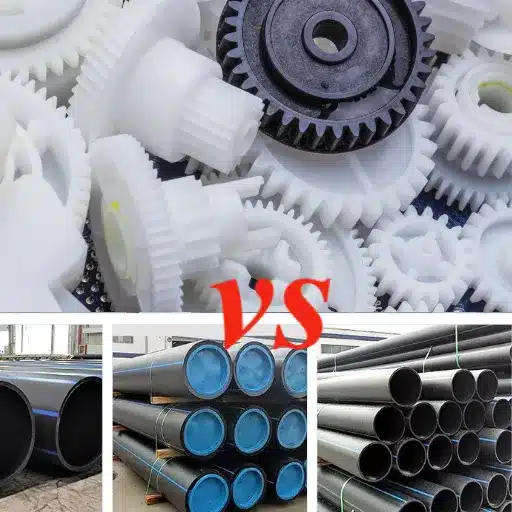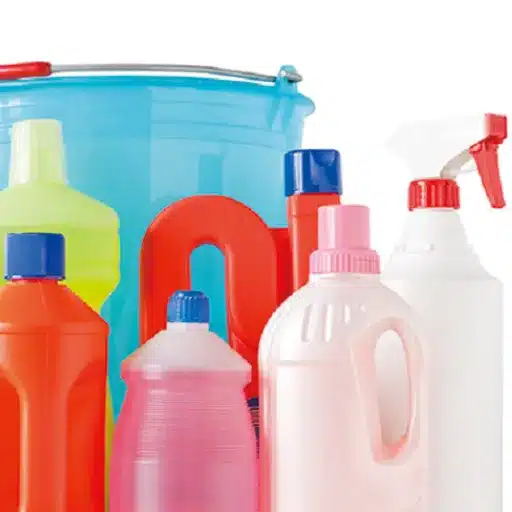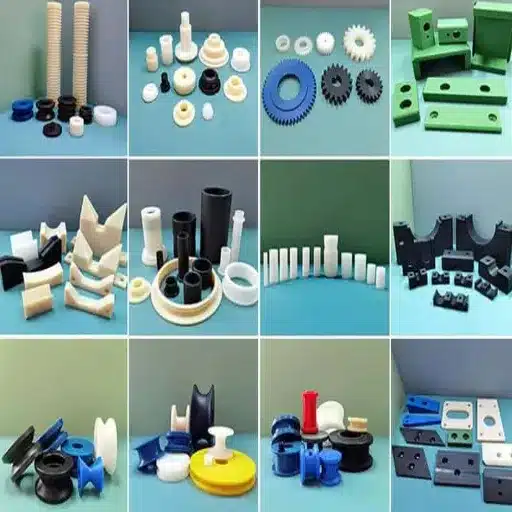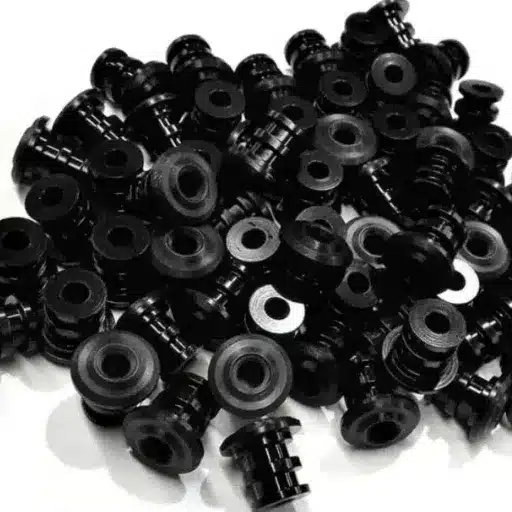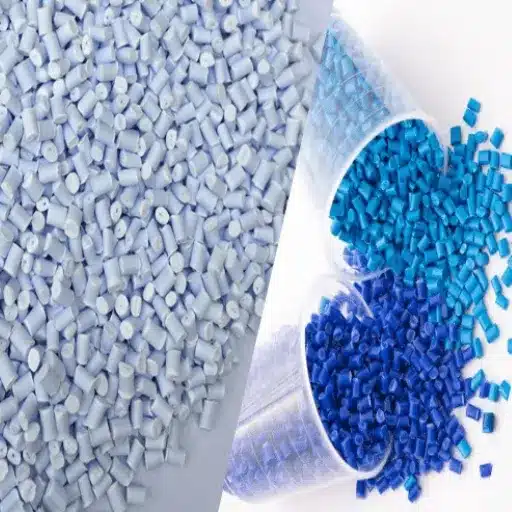When selecting materials for projects that require superior durability and performance, two materials often come to mind as providing suitable choices: HDPE (High-Density Polyethylene) and Delrin. Both materials offer distinct advantages, but the choice can be intimidating due to unfamiliarity with the properties and applications of each. Consider this article a roadmap through the notable differences between HDPE and Delrin, enabling you to choose the best one that suits your needs. Whether working on industrial components, crafting consumer goods, or seeking a suitable material for manufacturing processes, we aim to explore the pros, cons, and applications of each. By the time you finish reading this article, your vision will be clearer, and a great decision will have been made to complement the performance and durability of your project.
Introduction to HDPE and Delrin
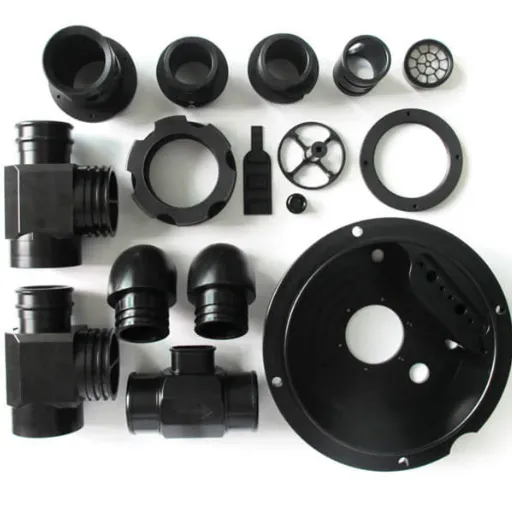
What is HDPE?
High-density polyethylene is a thermoplastic polymer, known for its versatility due to its strength, durability, and resistance to environmental conditions. Having a high strength-to-density ratio, HDPE finds applications in piping, containers, automotive applications, and construction. Its molecular structure affords it excellent resistance to impact, abrasion, and chemical attack, which is why industries opt for it when the occasion calls for materials that should be resilient, low-maintenance, and long-lasting.
HDPE offers a range of environmental benefits due to its recyclability and frequent use in sustainable manufacturing. It will not melt when exposed to harsh temperatures or prolonged UV rays, making it a great candidate for tank production, playground areas, and cable insulation. It is also FDA-approved for food safety purposes and is commonly used for packaging milk, juices, and other edible products.
This material also goes by the nickname of a lightweight material with excellent structural integrity. It is projected that global demand for HDPE will continue to increase due to its applications, affordability, and environmentally friendly production trends. HDPE serves as an excellent choice when the manufacturers want performance, cost, and environmental concern all in one.
What is Delrin?
Delrin is a versatile specialty thermoplastic, also known generically as polyoxymethylene (POM). The material offers great strength, stiffness, and dimensional stability, which makes it perfect for precision and durability applications. The material has low friction and almost wear resistance; this means its properties are favored for parts that are mechanical or automotive in nature, including gears, bearings, and bushings. Resistance to moisture, solvents, and chemicals gives Delrin a reliability rating under both dry and wet conditions. Being lightweight yet strong, Delrin finds particular acceptance among industries ranging from consumer products through to industrial manufacturing, where it sits comfortably in the vast middle ground of good performance, longevity, and processing efficiency.
Applications of HDPE and Delrin
Both HDPE and Delrin remain versatile industrial materials, molded according to industry-specific needs. Generally speaking, they encompass application areas where their unique applications may cater to the particular needs of an industry.
🚗 Automotive Industry
In the automotive sector, HDPE finds applications in fuel tanks, reservoirs for various fluids, and interior components, among others, due to its light weight and excellent impact resistance. Conversely, Delrin shines in precision automotive parts, such as gears, bushings, and fuel system components, due to its exceptional dimensional stability and wear resistance.
🏭 Industrial Manufacturing
HDPE finds applications in conveyor components, piping systems, and cutting boards due to its friction-resistant nature. Delrin, on the other hand, is ideal for high-performance moving parts such as bearings, valve seats, and rollers, where tight tolerances and mechanical strength are crucial.
🏥 Medical and Food Processing
Both industries prioritize hygiene above all else. HDPE is used for food containers and cutting boards because it is non-toxic and has antimicrobial properties. Delrin is often used in medical devices and food-grade equipment that require machining and the performance of clean-room environments.
⚡ Electrical and Electronics
Highly esteemed for excellent electric insulating properties, HDPE is used in cable and wire insulation and protective casing. Delrin flanks this field by adding rigidity and reducing friction, thereby making it applicable to precision parts in electronics, such as connectors and switches.
🛍️ Consumer Products
Ranging from household goods to sports equipment, HDPE is commonly used for plastic bottles, toys, and storage containers due to its low cost and versatility. Delrin, conversely, with its mechanical strength, is used in premium markets such as zippers, fasteners, and high-precision tools.
Key Takeaway: By leveraging the exclusive advantages of HDPE and Delrin, industries can maximize efficiency, reliability, and performance in various applications across multiple fields. Their properties, in a complementary manner, enable manufacturers to meet stringent standards while remaining cost-effective.
Key Differences Between HDPE and Delrin
Material Composition and Properties
| Property | HDPE | Delrin |
|---|---|---|
| Composition | Thermoplastic polymer made of polyethylene resin | Acetal homopolymer (polyoxymethylene – POM) |
| Structure | Semi-crystalline, impact-resistant, light and flexible | Semi-crystalline with high tensile strength and stiffness |
| Melting Point | Approximately 130°C | Approximately 175°C |
| Moisture Absorption | Significantly lower than Delrin | Maintains dimensions better in high-humidity environments |
HDPE, or High-Density Polyethylene, is a thermoplastic polymer made mainly of polyethylene resin. It offers a high strength-to-density ratio, resistance to wear by chemical attack, and durability under varying environmental conditions. Its semi-crystalline nature renders the material relatively impact-resistant, while also making it light and flexible. These properties enable HDPE to be utilized in various applications, including pipelines, containers, and geomembranes.
On the other hand, Delrin has been marketed as the most recognized acetal homopolymer for its superior mechanical properties. Delrin is technically defined as a semi-crystalline polymer with high tensile strength and stiffness, which exhibits several other performance properties, including low friction and excellent wear resistance. It can withstand heavy mechanical stress and maintain its form when subjected to thermal variations, making it suitable for precision parts such as gears, bearings, and automotive components.
In short, knowledge of the composition and properties of these polymers enables designers and engineers to determine which polymer best suits a particular application at the optimal price, function ratio, and performance.
Durability and Strength Comparisons
💪 Delrin Strengths
- Excellent tensile strength and impact resistance
- Superior stiffness and resistance to fatigue
- Withstands high mechanical loads over prolonged periods
- Maintains precision under demanding applications
🛡️ HDPE Strengths
- Renowned toughness and resistance to cracking at low temperatures
- Almost equally flexible with excellent impact resistance
- Resists repeated stress such as bending or stretching
- Superior weathering and chemical resistance
When comparing the durability and strength of polymers like Delrin and HDPE, it is necessary to evaluate their mechanical properties and behavior in the field. Delrin has an excellent reputation for its tensile strength and impact resistance, making it suitable for precision and demanding applications that require high loads, such as automobile parts and industrial gears. Moreover, Delrin’s stiffness and resistance to fatigue give it an advantage when put under load.
HDPE, on the other hand, is renowned for its toughness and resistance to cracking at low temperatures. It is best suited for heavy applications, such as piping systems, chemical containers, and outdoor furniture, where weathering and chemical resistance are key considerations. Though HDPE is not as stiff as Delrin, it is almost equally flexible, making it more resistant to high impacts and strong, sudden forces.
Cost Analysis and Economic Considerations
💰 Economic Analysis
From an economic standpoint, a detailed assessment of initial costs, operational expenses, and long-term performance is necessary when analyzing Delrin and HDPE.
Delrin Cost Factors:
- Higher initial price due to performance properties
- Justified in high-precision applications
- Reduces replacement and maintenance costs over time
- Longer service life under demanding conditions
HDPE Cost Factors:
- More economical for moderate performance demands
- Lower material cost with good durability
- Ideal for large-scale projects
- Widely available and cost-effective
High-performance Delrin is typically offered at a higher price due to its consideration of mechanical properties and dimensional stability. The price of Delrin is justified in applications where high precision, wear resistance, and long-term performance are required, as it will ultimately reduce replacement and maintenance costs over time.
HDPE, conversely, may constitute the more economical option in projects that utilize moderate quantities with modest performance demands. Its low material cost, combined with durability and chemical resistance, makes HDPE the obvious choice from a large-scale perspective, a success in piping systems, storage tanks, and structural elements subject to low stress.
In the end, its simple cost requirement should have been considered from a very holistic perspective, taking into account all factors such as project scale, functional demands, and anticipated lifespan of the project. By correlating material properties with those of the project, the company will be able to achieve full value while at the same time being able to meet its sustainability and performance-related goals functionally.
Performance Characteristics of HDPE vs Delrin
Resistance to Chemicals and Environmental Injuries
Both HDPE (High-Density Polyethylene) and Delrin (also known as polyoxymethylene or POM) are highly regarded for their variable chemical and environmental resistance, which extends their applications to various industrial processes.
🧪 HDPE Chemical Resistance
- Superb resistance to corrosive chemicals
- Excellent against acids, alkalis, and organic solvents
- High tensile strength with extremely low moisture absorption
- Prevents material degradation in contact with water
- Ideal for outdoor and corrosive exposure applications
⚡ Delrin Performance Properties
- Higher resistance to organic solvents, oils, and fuels
- Maintains structural integrity under high temperatures
- Fine resistance to heat cycles and thermal stress
- Good dimensional stability and creep resistance
- Better for technical/mechanical precision applications
HDPE is characterized by superb resistance to corrosive chemicals, including all types of acids, alkalis, and organic solvents. These properties enable HDPE to perform effectively in harsh industrial environments, such as those involving the processing and storage of chemicals. HDPE also offers high tensile strength with extremely low moisture absorption, which prevents the material from degrading in contact with water or varying humidity levels.
Delrin, on the other hand, exhibits higher resistance to attack by organic solvents, oils, and fuels, maintaining its structural integrity even under extremely high temperatures. Due to its fine resistance to heat cycles, this plastic has gained considerable preference where applications will be under constant thermal stress. Another advantage of Delrin is that it can resist creep and has good dimensional stability, which makes it a key consideration for high-precision parts used in high-stress environments.
Impact Resistance and Longevity
Impact Performance Overview: Both materials shine in their impact resistance capabilities, adding longevity to applications, though each excels in different scenarios.
HDPE Impact Characteristics: HDPE, in particular, is considered highly flexible, resisting high-impact forces without cracking, thus making it suitable for playground equipment, storage bins, and piping systems. The material is flexible and can bounce back after being impacted, while a somewhat more rigid material will break. The ability to resist repeated shocks in a given environment enhances the advantage of high-density polyethylene if the material is used in areas subjected to heavy use or adverse conditions.
Delrin Durability Profile: Delrin offers excellent toughness with a reasonable degree of rigidity, excelling in applications that require both precision and resistance to mechanical stresses. It remains durable for a long time, even under high loads, and performs well in environments of continuous wear, such as in automotive gears, bearings, and industrial machinery parts. Its resistance to fatigue and low coefficient of friction permits the working of Delrin components for long periods, possibly giving it a good chance to be replaced.
Weight and Density Considerations
| Material | Density Range (g/cm³) | Advantages |
|---|---|---|
| HDPE | 0.93 – 0.97 | Lightweight, easy handling, cost-effective transportation |
| Delrin | 1.41 – 1.42 | Higher stiffness, dimensional stability, superior load-bearing capacity |
When materials are evaluated for a specific use, weight and density significantly impact both the performance and practicality of a product. High-Density Polyethylene, being lightweight, offers density values ranging approximately from 0.93 to 0.97 g/cm³, thereby giving it an advantage for several applications that require easy handling, slight weight of the material, and so on, as well as being cheap in terms of transportation.
Acetal, or Delrin, meanwhile, realizes higher densities at about 1.41 to 1.42 g/cm³. The higher density means it is a little stiffer, more dimensionally stable, and load-bearing with a higher capacity, making it suitable for use with precision parts or mechanical components subject to higher stresses. Weight differences can instruct engineers and designers to make a material choice that best suits the project requirements; minimizing weight is one of many priority factors or a decision on structural integrity.
Choosing the Right Material for Your Project
Considerations When Choosing Between HDPE and Delrin
Depending on the type of project, while performance characteristics are taken into account, the cost of a material is often given significant consideration. Some factors can hence be considered as guidelines in making such a decision:
⚙️ Mechanical Properties
When some mechanical treatment involves high strength, rigidity, and dimensional stability, the material of choice shall be Delrin. It can withstand higher tensile forces, and under repeated load, it will retain its resilience for a longer duration. HDPE provides the necessary resistance to impact and flexibility for applications where deformation and shock absorption are the primary concerns.
🌡️ Temperature Resistance
The competent one stands above the other when confronted with temperature fluctuations and higher operational temperatures, retaining its shape and structural integrity in the process. HDPE, although sturdy, has lower thermal resistance and should be applied within a moderate-temperature working range.
🧪 Chemical Resistance
Both materials exhibit excellent chemical resistance, depending on the specific chemicals involved in the project. HDPE exhibits excellent resistance to acids, bases, and organic solvents, while Delrin resists oils, fuels, and certain solvents commonly found in industrial applications.
⚡ Wear and Friction
Delrin is suitable for parts that experience movement or friction. It offers low friction and wear resistance, making it excellent for gears, bearings, and other sliding applications. HDPE is resistant to wear, but in a precision scenario that requires a low-friction property, HDPE may be outperformed by Delrin.
💧 Water Absorption
Due to its high resistance to water absorption, HDPE is ideal for outdoor or moisture-exposed applications. Delrin has less water absorption than most plastics, but it is somewhat susceptible to moisture effects that, over a long period, can cause dimensional instability in very humid environments.
🔧 Fabrication
HDPE is easy to cut, weld, and heat-form, thereby lowering the production cost of simple items. Delrin is more rigid and is thus best suited for machining and manufacturing detailed components with high accuracy. Complexity in design can significantly influence material selection in this regard.
💰 Cost and Availability
Generally, HDPE is more cost-effective and widely available, making it ideal for larger projects that require bulk material. Delrin, meanwhile, is more expensive but offers a premium level of performance where precision and robustness are required, and smaller to medium-scale production can well justify this extra cost.
🌱 Environmental Considerations
HDPE is generally recyclable and is widely used in eco-conscious applications. Delrin will endure, but due to manufacturing complexity, it is rarely recycled. For projects with sustainability considerations, HDPE may be preferable due to its environmental advantages.
Decision Framework: Analyzing these factors in relation to your project requirements will help you determine the material best suited to your needs. Whether it’s cost, performance, durability, or sustainability, finding the best fit between HDPE and Delrin will ensure an efficient and long-term solution for your application needs.
Case Studies of Usage for HDPE and Delrin
🏗️ HDPE in Modern Infrastructure
Case Study: Springfield Water System
HDPE stands as a premier choice in municipal water systems due to its unparalleled resistance to corrosion and chemical degradation. The city of Springfield replaced its aging metal pipelines with HDPE ones and managed to reduce maintenance costs by 30% over five years. Being lightweight, it also allowed for quicker installation, shortening the project schedule by almost a quarter. This case exemplifies the reliability of HDPE for large-scale infrastructure and highlights its advantages in terms of cost and performance.
Results:
- 30% reduction in maintenance costs
- 25% shorter installation time
- Superior corrosion resistance
🚗 Delrin in Precision Engineering
Case Study: Automotive Fuel System Components
In processes requiring ultimate precision and mechanical properties, Delrin shines. One large car company employed Delrin in its production line to replace metal fittings, thus reducing the weight of several vehicle models by 15% and improving fuel efficiency. Its non-lubricating property, which contrasts with low friction, gave the fittings about a 20% greater service life, in synergy with operational performance under stress-bearing incidents without compromising safety.
Results:
- 15% weight reduction in vehicle models
- 20% greater service life
- Improved fuel efficiency
📊 Comparative Insights
Both cases demonstrate the specific applications that enable the notable values of HDPE and Delrin to be effectively utilized. HDPE performs best in sites where the basic environmental abuse criteria are met during installation, while Delrin remains an absolute necessity for fine-tolerated, highly mechanical applications. When these materials are properly utilized to address specific problems, several performance metrics are optimized, resulting in measurable benefits such as cost reductions, increased operational efficiency, and reduced environmental impact.
Expert Recommendations For Specific Applications
🚗 Automotive Industry
Delrin: Preferred for load-bearing parts such as gear wheels, fuel system components, and under-the-hood applications due to excellent strength and dimensional stability.
HDPE: Ideal for fuel tanks, interior panels, and covers due to lighter weight and chemical/impact protection.
✈️ Aerospace Engineering
Delrin: Used for precision engineering of fasteners, gears, and hinges requiring mechanical load endurance.
HDPE: Applied for lightweight, anti-corrosion protective housings and insulating materials enhancing energy efficiency.
🏥 Medical Applications
Delrin: Choice for reusable surgical instruments and precisely machined medical instruments due to biocompatibility.
HDPE: Used for disposable items, containers, packaging, and heavy-duty laboratory equipment with sterilization capability.
🏭 Industrial Machinery
Delrin: Provides precision and durability for conveyor belts, bearing blocks, and components with repetitive motion.
HDPE: Resists corrosion and impact in piping systems, storage tanks, and protective barriers.
📦 Consumer Goods & Packaging
HDPE: Outstanding in packaging solutions – lightweight, waterproof, recyclable for bottles, containers, shopping bags.
Delrin: Used in products requiring fine tolerances and strength like electrical housings and complex machinery mechanisms.
Strategic Insight: Understanding the unique advantages of these materials enables industries to strategize material selection in a manner that best meets application needs. Both materials offer opportunities for innovation while emphasizing sustainability, cost-effectiveness, and process optimization.
Conclusion: Making the Informed Choice
Summary of Key Points
In my opinion, each material has its own set of advantages that make it suitable for a particular application. HDPE is lightweight, resistant to chemicals, and less expensive; therefore, it should be selected for projects with a minimal budget that also require strength. On the other hand, Delrin is used where precision, strength, and wear resistance are required, making it ideal for mechanical parts with performance considerations.
So, things to be treasured, such as the capabilities of the HDPE sustainability feature, include, for instance, cases where industries prioritize environmentally friendly aspects. Machinability-wise, Delrin will always be a cherished material that can produce parts with great dimensional stability, allowing for the creation of intricate designs with excellent tolerances. The final choice of material, therefore, depends significantly on the satisfaction of these aspects of the application, allowing for an informed decision that guarantees better performance, efficiency, and long-term value.
Future Trends in Plastic Material Usage
Looking into the future, I see sustainability and innovation as the primary forces shaping the use of plastic materials. As environmental issues become serious and stricter regulations come into effect, the industry is steadily drifting towards biodegradable and recycled plastics. These materials help prevent waste and support contemporary endeavours to curb carbon footprints. I am quite excited about this trend, as it opens up the possibility of contributing to an economy where plastics are efficiently repurposed and reused. Through sustainable practices, I can develop alongside innovations that meet responsible manufacturing standards.
Additionally, with polymer technology advancing at such a rapid rate, numerous application scenarios are being explored for plastics. For example, high-performance engineering plastics are being considered for applications that require improved thermal, chemical, and mechanical properties, serving as an alternative in relatively demanding areas, such as automotive and aerospace. From my perspective, I adapt to meet the industry’s heavy demands while remaining competitive and creative, thanks to these innovations. This renaissance makes one, therefore, much more adaptable, emphasizing balancing performance, cost, and environmental impact.
Ultimately, I believe that collaboration across sectors will accelerate the trends and breakthroughs in the design and application of materials. The utilization of advanced solutions, such as additives for lightweighting or nanotechnology for enhanced strength, enables further improvements in product quality while reducing the resources required for its production. By staying informed and being proactive, I will align myself with these emerging trends and bring new-age solutions to all projects that advance sustainability and efficiency. Aiming to contribute significantly to the future of plastic materials, I strive to remain relevant through the work I do.
Conclusion on HDPE vs Delrin
✅ Choose HDPE When:
- Cost-effectiveness is priority
- Chemical resistance is required
- Lightweight applications needed
- Flexibility and performance at best price point
- Sustainability is a priority (recyclable)
- Packaging, piping, or construction applications
Ideal for projects where moisture resistance and economical solutions are key factors.
⭐ Choose Delrin When:
- Precision parts required
- High strength and stiffness needed
- Dimensional stability is crucial
- Gears, bearings, and mechanical components
- High mechanical stress environments
- Intricate designs with tight tolerances
Premium engineering plastic for specialized, high-performance parts.
🎯 Final Decision Framework
Ultimately, the choice between HDPE and Delrin hinges on the specific needs of the project. I incline toward HDPE if cost-effectiveness, chemical resistance, and lightness are considered more important. Conversely, Delrin becomes a clear choice when strength, weight, and precision are the primary objectives. I can evaluate projects well enough to select the right materials that will adequately fulfill both functional and economic considerations.
Reference Sources
- HDPE vs. Delrin®: Material Differences and Comparisons – Xometry
- HDPE Vs Delrin: Key Differences And Applications – Jaco Products
- HDPE vs Delrin: Key Differences Explained – Otivic
- HDPE vs. Delrin: A Comprehensive Comparative Analysis – JHD Material
- HDPE vs. Delrin: Which Material Should You Choose – WeProFab
- Find more info now.
Frequently Asked Questions (FAQs)
On the one hand, HDPE, or high-density polyethylene, is one of the most common thermoplastics, boasting top-notch chemical resistance; it does not absorb moisture. On the other hand, Delrin is a brand name for an acetal-polymer type of thermoplastic, a high-performance engineering plastic characterized by its high tensile strength and impact resistance. HDPE is typically used in applications where pipes are required, such as containers, whereas Delrin is suitable for gears and bearings that require precision. Its dimensional stability makes Delrin ideal for very high-precision applications that demand high strength and stiffness. Hence, the major difference lies in terms of mechanical properties and the applications they can be put to.
Since HDPE is impact-resistant, chemically resistant, and has high durability, it is mainly used in packaging, piping, and automotive applications. High-impact applications with relatively low friction are suitable for HDPE. Meanwhile, Delrin finds use in applications requiring superior dimensional stability and a low coefficient of friction, such as gears, bearings, or other types of precision machining work. Both these materials generally provide good wear resistance, but are typically used for different areas due to their properties. It may be advantageous to know the application that suits each of these materials before purchasing.
Generally, Delrin exhibits higher tensile strength and impact resistance than HDPE, which supports its use as a choice for precise applications. However, HDPE remains strong, flexible, and provides high chemical resistance, making it suitable for outdoor applications and environments where it may be exposed to various acids. For low friction and dimensional stability, Delrin might be the proper choice for moving parts. Therefore, comparing their mechanical features is helpful when selecting the correct material for a specific application.
Is HDPE better than Delrin? That depends on the specific use case. While HDPE is the go-to material for chemical resistance, it can also be a great choice where moisture resistance and flexibility are required, as it is commonly used in piping systems. The application of Delrin, in turn, is specified in the design requirements for storage, in whatever form, to provide high-strength, low-friction, and precision-giving properties for automotive parts, machinery, and components. Apart from these considerations, the decision on which to choose rests also on the temperature, load, and environmental conditions of your intended application.
The advantages of Delrin over HDPE include higher mechanical strength, greater tensile strength, and improved dimensional stability. Delrin has a very low coefficient of friction, making it ideal for use in moving parts such as gears or bearings. Delrin also wears away less readily than HDPE, making it suitable for high-performance applications. Furthermore, Delrin can withstand high temperatures and maintain its properties under stress, making it an appealing material for precision engineering. In essence, Delrin is most chosen when tight tolerances and high durability are needed.
Being recyclable, HDPE has been largely recycled for various uses, ranging from containers to building materials. Hence, it is environmentally friendly. On the other hand, Delrin is seldom recycled due to its thermoplastic nature and the processing difficulties associated with acetal materials. Both materials offer great qualities for their respective uses, but differ in terms of recyclability. With knowledge of their recycling capabilities, one can make judgments on sustainability and environmental considerations.
🎯 Ready to Choose the Right Material?
Now that you have a comprehensive understanding of both HDPE and Delrin, you’re equipped to make an informed decision that will optimize your project’s performance, cost-effectiveness, and longevity. Remember to consider all the factors we’ve discussed to ensure the best material choice for your specific application.

